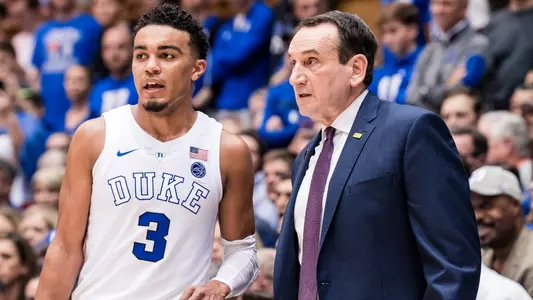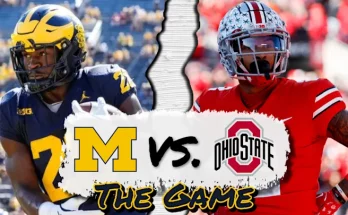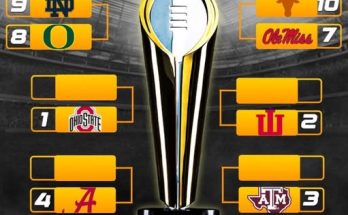In March of 1987, the Duke Blue Devils were riding high. Just a year earlier, Coach Mike Krzyzewski had guided his squad to the ACC Championship Game and cemented Duke as a program on the rise. The pieces were in place, the momentum was real, and Durham was buzzing with belief. The city, the students, and the alumni could feel it—this wasn’t just a talented team, it was a group on the cusp of something special. The veterans were experienced, the younger players were blossoming, and “Coach K” had them believing that this was the year they could go from a promising program to a national powerhouse. All the ingredients seemed right. Then came a night that still stings in Blue Devil history, a game that started with optimism and ended with the kind of heartbreak that lingers for decades.
That 1986-87 Duke team had skill, grit, and a relentless work ethic. They had been through the grind of the ACC, tested by the physical and mental demands of facing some of the best programs in the country. They had answered those challenges, stacking up wins and developing a reputation for a defense that could smother opponents and an offense that could score in bunches. The talent was spread across the floor—steady senior leadership, emerging underclassmen who could light up the scoreboard, and a bench that could give valuable minutes when called upon. Duke had already made themselves a dangerous team in the eyes of the college basketball world. They weren’t just winning games; they were winning with authority, carrying themselves like a team destined for March glory. The confidence was so high that when the NCAA Tournament began, many analysts and fans alike viewed Duke as a legitimate contender for the national title.
The Blue Devils charged into the tournament with momentum, navigating the early rounds with poise. Each win fed into the growing sense that something magical was building. Durham was alive with anticipation. In the student section at Cameron Indoor Stadium, chants and cheers rang out not just for the games being played, but for the dream ahead—the Final Four, and maybe even cutting down the nets as champions. It was all in front of them. But in March Madness, dreams can be shattered in an instant. That’s the beauty and the cruelty of the tournament. And for Duke, the cruelty would arrive in the form of a matchup that, on paper, seemed winnable but proved to be anything but.
The regional final set the stage for one of the most painful defeats in program history. Duke was matched up against an opponent that played with a fearlessness that didn’t quite fit their seeding. The game began with both teams feeling each other out, trading baskets in the early going. Duke looked composed, moving the ball well, hitting open shots, and defending with intensity. But there were signs—small ones at first—that trouble might be brewing. A missed box-out here, a rushed three-point attempt there. The opponent began to find a rhythm, hitting tough shots and growing in confidence. For Duke, the offense that had been flowing so smoothly started to stall, the crisp ball movement slowing into more static, isolation possessions. The crowd could feel the shift. This wasn’t going to be the easy march to the Final Four many had imagined.
The second half brought a surge of urgency from Duke, but with urgency often comes pressure, and with pressure comes mistakes. Key players picked up fouls at inopportune times, and Coach K had to juggle rotations to avoid losing them entirely. Meanwhile, the opponent smelled opportunity. They pushed the tempo, attacked mismatches, and knocked down clutch shots. Every time Duke cut the deficit, a dagger of a basket came in response. The building tension was almost physical—you could feel the weight of each possession. And then came the moment that fans still talk about, the one that turned a close battle into a nightmare. A turnover at midcourt, the result of a miscommunication, led to a fast-break layup that pushed the opponent’s lead to two possessions in the closing minutes. The collective gasp from Duke fans was followed by an eerie quiet, the kind of silence that comes when doubt creeps in.
Duke fought to the very end. They pressed full-court, tried to trap, and launched quick threes in hopes of a comeback. But the shots that had fallen all season long suddenly refused to drop. When the final buzzer sounded, the scoreboard told a story no one in Durham wanted to read. The dream had died, not in the Final Four or the championship game, but one step shy. The team that seemed destined for greatness was headed home, their season over in stunning fashion. Players walked off the court with blank stares, some with tears welling in their eyes. Coach K, ever the leader, met them with words of perspective, but even he couldn’t mask the disappointment. This wasn’t just a loss—it was a gut punch to a program that had dared to believe it was ready for the biggest stage.
In the days that followed, the pain lingered. Local papers replayed the game in detail, pointing to the missed opportunities, the key turnovers, and the defensive lapses that opened the door for the upset. Fans debated what had gone wrong, from the X’s and O’s to the mental side of the game. The players, meanwhile, had to live with the reality that their season, so full of promise, had ended with a stumble that would be remembered long after the box score faded into the archives. For the seniors, it was a crushing end to their college careers. For the underclassmen, it was a lesson in how thin the line can be between glory and heartbreak in March.
Yet, as much as that loss stung, it also became part of the program’s DNA. Duke would go on to experience its share of triumphs under Coach K, winning national championships and producing legendary players. But that night in March 1987 remained a reminder of how quickly things can change, of the importance of focus, execution, and seizing the moment when it’s there. The players from that team often speak about how that defeat shaped them, not just in basketball but in life. It taught them resilience, the need to respond to setbacks with determination rather than despair. In a way, the loss became a motivator, fueling the hunger that would carry Duke to future greatness.
For the fans, though, the sting never fully faded. Every March, as the tournament unfolds, memories of that game resurface. It’s a chapter in Blue Devil history that’s as much about heartbreak as it is about hope. The hope was real, the belief was genuine, and for a while, it seemed like destiny was on their side. But destiny, as March Madness so often reminds us, is never guaranteed. That’s why the 1987 loss still stings—it was the year when all the pieces seemed to fit, only for the puzzle to collapse in the final moments. The pain of that ending is matched only by the memory of what could have been. And for Duke, that’s a memory that will always live just beneath the surface, waiting to be felt again every time the bracket is unveiled and dreams begin to take shape.



